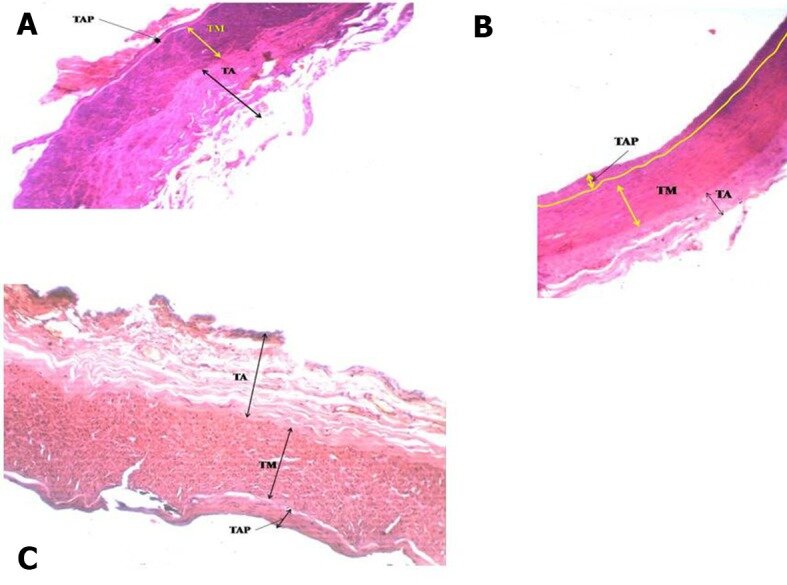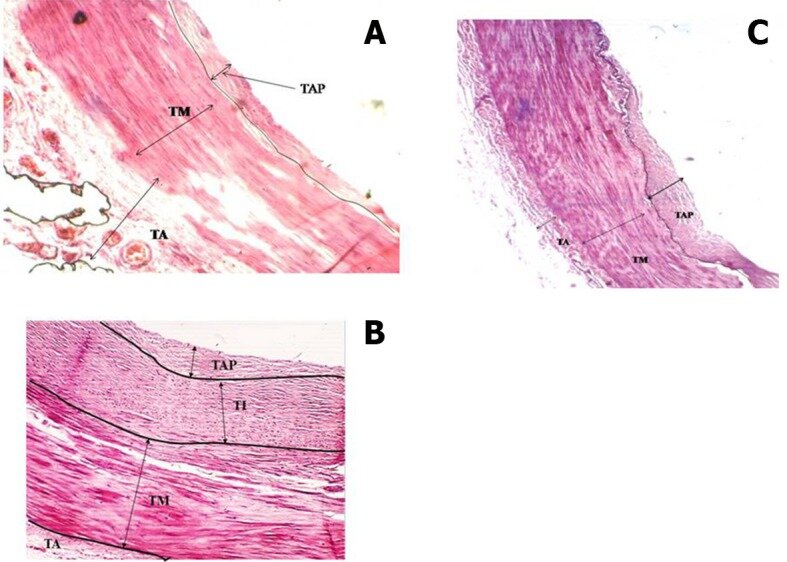J Vasc Bras. 2018 Oct-Dec;17(4):280-289. doi: 10.1590/1677-5449.004118.
Abstract
BACKGROUND:
Tortuosity and bifurcations in carotid arteries alter the blood flow, causing atherosclerosis.
OBJECTIVES:
The aim of the present study is to analyze the effect of variant vascular anatomy in the cervical region on development of atherosclerosis by microanatomical examination.
METHODS:
The effect of blood flow at anomalous bends and bifurcations was observed in right carotid arteries of a seventy year old female cadaver. Fifteen histological slides were prepared from the carotid arteries and interpreted to verify predictions of atherosclerosis.
RESULTS:
The model predicts atherosclerosis at bends, bifurcations and large aperture arteries. Microanatomical examination revealed presence of atherosclerosis of varying thickness at the bends and bifurcation in the right carotid arteries, as predicted. Atherosclerosis was also detected in the straight part of the wider common carotid artery. No atherosclerosis was observed in the contralateral carotid arteries. The variant carotid vascular anatomy consisting of bends, bifurcations and wider arteries revealed that the shear stress and velocity of blood flow are reduced at these anomalous sites.
CONCLUSIONS:
Anatomical anomalies such as bends and branching in the carotid arteries alter the irrigation pattern and generate biomechanical forces that cause turbulent flow and reduce shear stress/blood flow velocity. Decreased shear stress and velocity causes development of atherosclerosis. Histological slides established the presence of atherosclerosis at bends and bifurcations and in wider arteries.
KEYWORDS:
bifurcations; hemodynamic model; microanatomy; tortuosity





